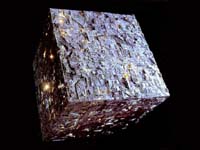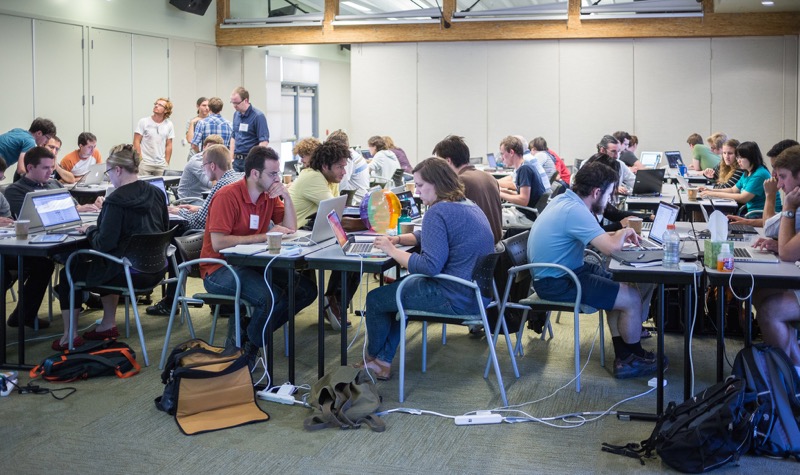
|
Cococubed.com
|
| Education Materials |
Home
Astronomy Research
2026 Neutrinos From De-excitation
2024 Radiative Opacity
2024 Neutrino Emission from Stars
2023 White Dwarfs & 12C(α,γ)16O
2023 MESA VI
2022 Earendel, A Highly Magnified Star
2022 Black Hole Mass Spectrum
2021 Skye Equation of State
2021 White Dwarf Pulsations & 22Ne
Software Instruments
2026 AAS Journals
AAS YouTube
Listing of 500+ Author Videos
AAS Peer Review Workshops
Outreach Material
Education Material
Other Stuff:
Bicycle Adventures
Illustrations
Presentations
Contact: F.X.Timmes
my one page vitae,
full vitae,
research statement, and
teaching statement.
I've been involving learners in astronomy, physics, and math since 1982. Past affiliations include UC Santa Barbara, UC Santa Cruz, the University of Chicago, the School of the Art Institute of Chicago, the MESA Summer School at UC Santa Barbara, and Arizona State University (ASU). Currently I engage learners for the American Astronomical Society (AAS).
At ASU, I specialized in large enrollment, online, introductory courses. Between 2015 and 2018 my ASU + EdX Introduction to Solar Systems Astronomy course was the largest college-credit eligible astronomy course in the world (∼15,000 enrollment per run) Between 2018 and 2024 this experiment transitioned to ASU's Earned Admission program where the course waslargely enrolled with learners from Starbucks, Uber, the US military, and other institutional partners. Between 2014 and 2025 my ASU course, Energy in Everyday Life, engaged ∼3000 learners/year. This multi-disciplinary survey course offered learners the opportunity to master practical job skills -- the ability to observe, gather data, and think critically in order to make reasonable order-of-magnitude estimates in everyday life.
For the AAS, I am the pile driver behind the AAS Peer Review Workshops (2022 - present). These in-person events focus on key aspects of peer-review process, as practiced by the community, at the AAS journals. Though extensive involvement with hands-on labs, participants gain familiarity with the AAS peer-review process and learn how to be better referees and how to make better use of peer-review for their own manuscripts.
Archives of some past courses: Energy in Everyday Life, Introduction to Solar Systems Astronomy, Geometry of Art and Nature, Calculus
Illustrations for my courses, and more!
My teaching statement.
Partially in response to the March 2020 pandemic:
|
AAS Education Series: |
Teaching Astronomy Online - Tools and Tips: |
AAS Responds to Increased Online Instructional Needs
AAS Curated Content for Moving Astronomy Courses Online
Open Virtual or Online Teaching Resources
Undergraduate Open Education Resources:
Astronomy-2e by Andrew Fraknoi, David Morrison, and Sidney C. Wolff
Astronomy Education, Volume 1: Evidence-based instruction for introductory courses by Chris Impey and Sanlyn Buxner
TeachAstronomy and TeachAstronomy textbook by Chris Impey
Center for Astronomy Education by JPL NASA
Crash Course Astronomy by Phil Plait
Advanced undergraduate and first year graduate Open Education Resources:
Ed Brown's Lecture Notes
The Open Astrophysics Bookshelf
Free browser-based planetarium programs:
World Wide Telescope
In-The-Sky
Stellarium
TheSkyLive
TheSkyLive 3D Solar System
StarAtlas
Google Sky
Open-source for desktops and laptops:
XEphem
Stellarium
Augmented reality apps for mobile devices.
Free, often with with paid upgrade options:
StarWalk
SkySafari
Commercial, often with institutional discounts:
Starry Night
Stellarium Mobile
A place to post some notes:
• Abundance variables
• Abundance variable first derivative nuances
• Abundance variable first derivative examples
• Abundance variable second derivatives
• Nuclear energy generation expressions
• Reaction network origins
• Effective reaction rates for networks
• Self-heating reaction networks

Future famous astrophysicists in action
at the 2016 MESA Summer School